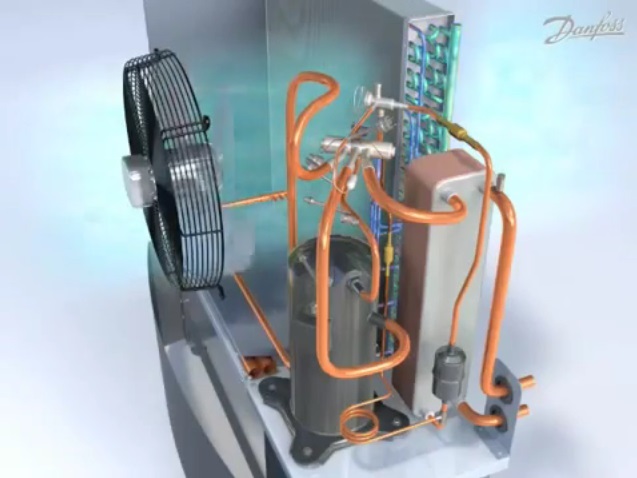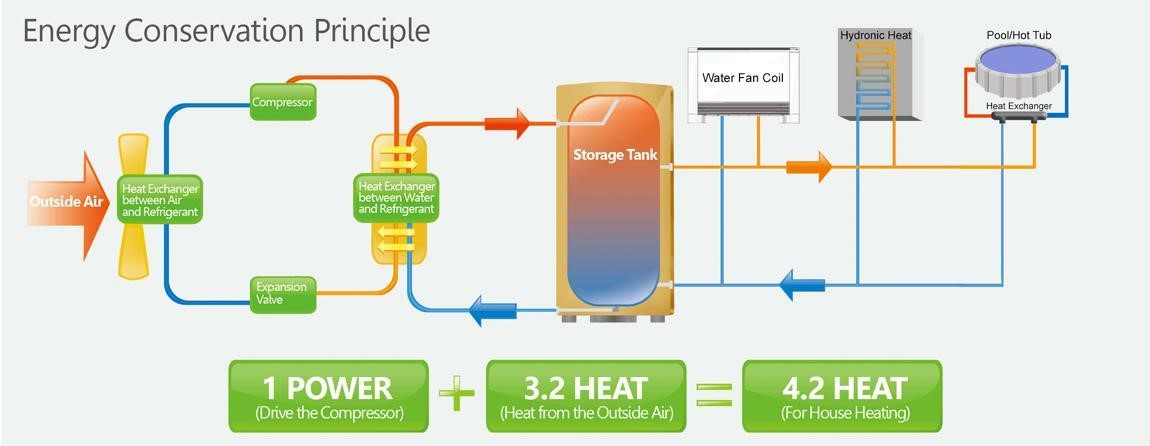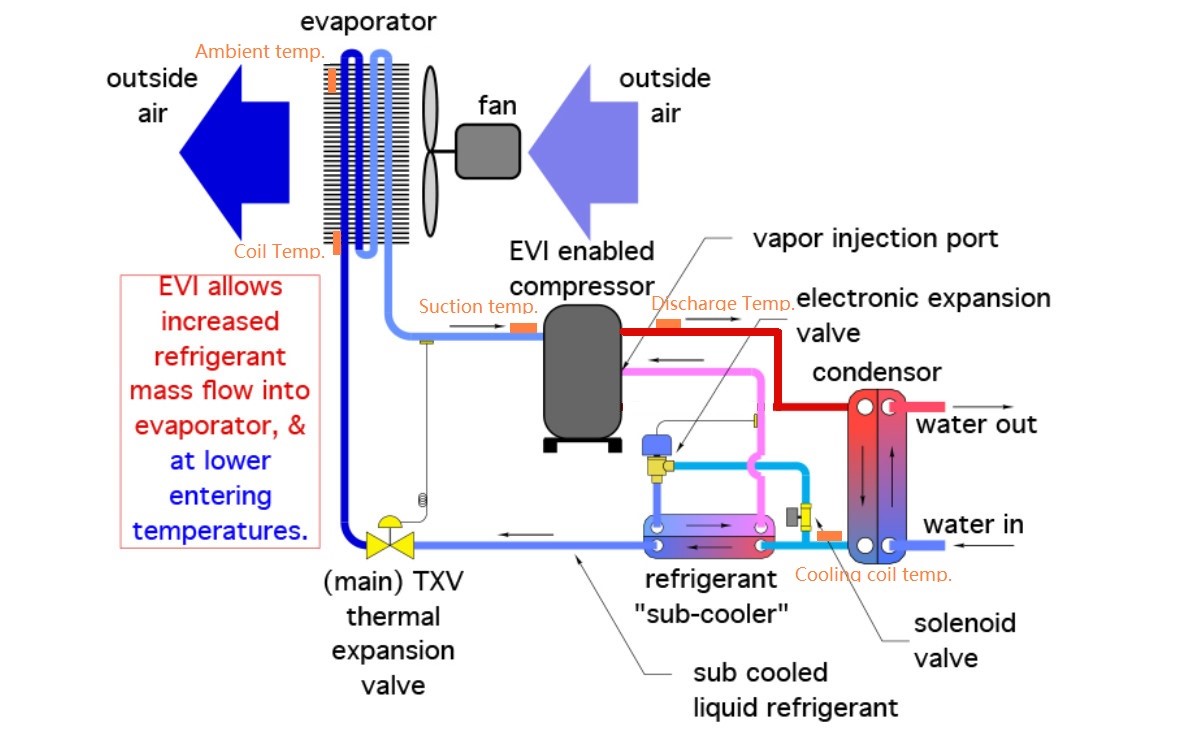How does a Hydronic Air to Water Heat Pump Work?

A heat pump is a device that seems magical but, there is no magic! It is simply a device that transfers or “pumps” energy from one source to another. It does this by means of the refrigeration cycle and heat exchangers. The most common fluid used in this cycle is freon. Arctic Heat Pumps use environmentally friendly R410a Freon.
The refrigeration cycle is simply a means of taking energy from one source and efficiently transferring it to another source. In a geothermal heat pump unit, we take the energy out of the ground and transfer it to either water or the air. In the case of water, we call this a water to water heat pump. In the case of air, we call this a water to air heat pump. But Air to Water heat pumps are slightly different. Instead of pulling the energy from the ground we pull it from the air and transfer it to water. This is called an air to water heat pump. Unlike geothermal heat pumps an Air to Water (ATW) heat pump cost much less to install as we only need a large fan to blow the air’s energy though a large evaporator coil (heat exchanger), whereas a geothermal system requires 100’s of feet of trenching or vertical boring and large pumps to pump through all this pipe.
The mystery of heat pumps is that they produce more energy than they consume?
While this is true, the reason for this seemingly magic is that the energy was moved from an area of free energy (ground or air) into the house to be used. Because this energy was “pumped” inside the house we only had to pay for a small amount of energy to run the pump system (refrigeration cycle) So it is not magic but just taking advantage of free energy that exist from mother natures and the sun!

The amount of energy we used to pump this heat versus the total energy we gained is called the Coefficient of Performance or COP. The higher the number the more energy efficient the system is. An air to water heat pump is more efficient when it is warmer out but on average over the whole heating season and ATW heat pump has a COP of between 3-35. This means for every 1 Kw you spend you will produce 3-3.5Kw of free energy or a total saving of 66-70%.
Cold Weather Heat Pump
Until recently most heat pumps worked unit just below freezing and then their performance quickly dropped off. There are a few reasons for this but mostly because the freon could not absorb enough heat energy from the cold air. In order to get more energy out of the air the Freon in the heat pump needs to run at an even colder temperature than the air. So, if we want to pull energy out of air at -30 C (-22F) air then the freon needs to be subcooled to a temperature of say -40 C in order to move the energy from the hot source (air) to a cool source (freon). Arctic Heat Pumps use Advanced Vapor Injection or EVI technology to lower the temperature of the freon by as much as 30%. This is done by adding a second subcooling heat exchanger and a second electronic expansion valve before the main expansion valve. By doing so we strip off some heat energy and transfer it to a special injection port found on the EVI compressor. This extra energy boosts the output of the compressor and sub cools the freon to an even lower temperature in the evaporator to run at lower temperatures, making it that much more efficient in “pumping” heat.




